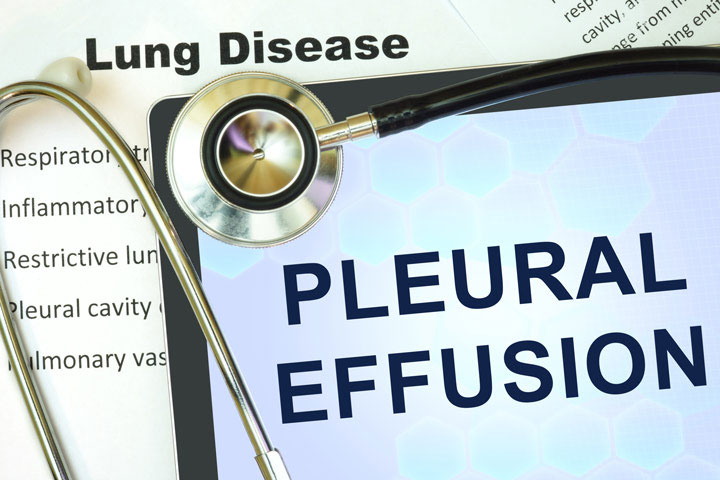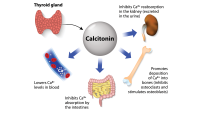Early identification results in prompt diagnosis.
Takeaways:
- Parapneumonic effusions can increase in size despite antimicrobial therapy.
- Nurses should be attuned to changes in pulmonary assessment parameters and prepared to assist with diagnostic thoracentesis and chest drainage tube insertion as indicated.
- A chest drain may be required to facilitate drainage of the effusion and prevent progression to empyema and sepsis.
Sherry Montgomery*, a 63-year-old woman, arrives at the ED with a 10-day history of cough, fever, malaise, right-sided pleuritic chest pain, and shortness of breath. Her medical history includes chronic obstructive pulmonary disease and hypertension. She smokes two packs of cigarettes a day and has alcohol use disorder. The ED provider orders I.V. antibiotics and Ms. Montgomery is admitted to the medical-surgical unit for treatment of community-acquired right lower-lobe pneumonia with right pleural effusion. A pulmonologist consult for diagnostic thoracentesis is scheduled.
History and assessment hints
Christine, the night shift nurse, performs an initial assessment. Vital signs are tympanic temperature 100.6˚ F (38.1˚ C), HR 100 bpm, BP 138/90 mmHg, RR 24 breaths/minute, and O2 sat 92% on 2 L/minute oxygen by nasal cannula. Chest examination reveals diminished bronchial breath sounds in the right lower lobe. Ms. Montgomery rates right-sided chest pain on inspiration as 6 out of 10. Christine administers ibuprofen as ordered for pleuritic chest pain.
Call for help
About 45 minutes later, Ms. Montgomery reports improved chest pain and that she can cough and expectorate effectively, but she feels significantly more short of breath. Her RR is 32 breaths/minute, and her O2 sat is 88%. She’s pale and restless. Her BP is 160/90 mmHg, HR 116 bpm, and temperature 101°F (38.3˚ C). Christine notes noticeably decreased breath sounds on the right.
Christine suspects enlargement of the pleural effusion. She calls the rapid response team (RRT) and notifies the pulmonologist. The respiratory therapist and Christine place Ms. Montgomery in high Fowler’s position, apply 40% humidified oxygen by mask, and initiate continuous pulse oximetry monitoring. Christine also places the patient on a cardiac monitor and verifies I.V. patency.
On the scene
The RRT physician orders immediate portable upright posterior-anterior and lateral chest X-rays. Results confirm Christine’s suspicion of enlarging right pleural effusion.
Christine understands that the planned diagnostic thoracentesis must be performed immediately and a chest drainage tube may be required. She gathers the thoracentesis and thoracotomy trays and the crash cart. She assists the patient to a seated position on the side of the bed with her arms resting on a pillow on the bedside table so that free-flowing pleural fluid moves to the most dependent position within the thorax.
Bedside ultrasound-guided thoracentesis removes 400 mL of thin cloudy pleural fluid, which relieves lung compression. The pulmonologist inserts a small-bore chest drain.
Outcome
The pulmonologist adjusts antimicrobial therapy in response to pleural fluid Gram stain results. Ms. Montgomery’s symptoms steadily improve. A repeat chest X-ray on day 7 shows complete resolution of the effusion, and the pulmonologist orders removal of the chest tube.
Education and follow-up
As many as 57% of pneumonia cases have an associated parapneumonic pleural effusion. These effusions can resolve with appropriate antibiotics alone, but thoracentesis and repeat chest X-ray should be performed if patients don’t respond satisfactorily.
Patient education for Ms. Montgomery includes completion of antibiotic therapy, chest tube dressing site care, breathing exercises, and when to contact her provider for worsening symptoms. Christine also provides information related to smoking cessation, alcohol use disorder, and pneumonia vaccine.
Christine’s suspicion of an enlarging pleural effusion and activation of the RRT ensured prompt diagnosis and treatment.
*Names are fictitious.
Amy Shay is a clinical assistant professor at the Indiana University School of Nursing in Indianapolis.
References:
Helgeson SA, Hiroto BT, Billings SJ, Scott CL, Lewis MD. Which patients with a parapneumonic effusion need a chest tube? Cleve Clin J Med. 2018;85(8):609-11. doi: 10.3949/ccjm.85a.17036
Jones J, Lutosa L. Pleural effusion. Radiopaedia. April 14, 2022.
Ramirez JA, Wiemken TL, Peyrani P, et al. Adults hospitalized with pneumonia in the United States: Incidence, epidemiology, and mortality. Clin Infect Dis. 2017;65(11):1806-12. doi:10.1093/cid/cix647
Strange C. Epidemiology, clinical presentation, and diagnostic evaluation of parapneumonic effusion and empyema in adults. UpToDate. June 14, 2022.
Wiederhold BD, Amr O, Modi P, O’Rourke MC. Thoracentesis. StatPearls. May 1, 2021.
Yeager S. Thoracentesis (assist). In: Wiegand DL, ed. AACN Procedure Manual for High Acuity, Progressive and Critical Care 7th ed. Philadelphia, PA: Elsevier; 2017; 222-6.
Zoumot Z, Wahla AS, Farha S. Rapidly progressive pleural effusion. Cleve Clin J Med. 2019;86(1):21-7. doi:10.3949/ccjm.86a.18067



















1 Comment. Leave new
Great teaching article. And unfortunately with the population being older and multiple respiratory symptoms we see this more often. Thanks